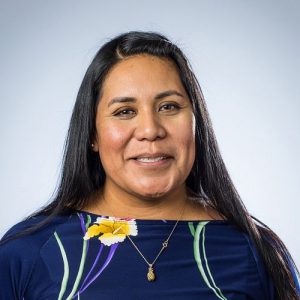
A-Dae Romero Briones is director of the Native Agriculture and Food Systems initiative at First Nations Development Institute. We talk about programs across the country that are helping native people build healthier food systems and to strengthen the traditions that have kept these systems alive even during the most devastating periods of colonization.
1’23 First Nations Development Institute firstnations.org
2’45 Standing Rock Elders program
3’54 creating community gardens for food sovereignty in North Dakota
4’36 supporting traditional hunters and gatherers
4’55 giving food via traditional forms of distribution
6’05 the idea of “the commons” is missing from American agriculture
7’10 local food initiative
8’38 Hawaii project — Kōkua Kalihi Valley community and health clinic
9’52 they bought the valley and made it into a community space
10’22 a more holistic vision of health that includes beauty, food, and the environment
11’14 medical prescriptions include being outdoors and gardening
12’09 challenging the idea that an expert knows more than the community about health
12’31 community needs to be healthy for an individual to be healthy
15’01 New Mexico projects
15’34 Keres children’s learning center
16’41 Acoma farmer doing traditional, intergenerational agriculture
17’47 Jemez Pueblo health projects
19’32 results of assimilation are real, but traditional practices have survived and are getting attention now
23’58 common threads among different indigenous groups
24’36 the shared experience of colonization
26’19 questions of decolonization
27’13 a lot of resistance has gone unacknowledged
28’36 colonizers saw indigenous people as being outside of agriculture—they were the “wild” that they came here to “tame.”
30’02 the US has to understand that agriculture has always belonged to native people
31’11 long history of agriculture and trade on this continent
33’07 part of her work is changing the narrative
33’44 getting projects to larger funders so that they’re part of the greater conversation about agriculture
35’09 regeneration as part of an indigenous paradigm and as an opportunity to talk about soil and water
37’11 California central valley is a place where indigenous tribes are not recognized, even though they contributed to the health of the land
39’23 indigenous resilience in the face of destruction and disease – every child is an example of the resilience of the generation before



Subscribe:
Apple Podcasts
Spotify